-
main-collection-product-grid
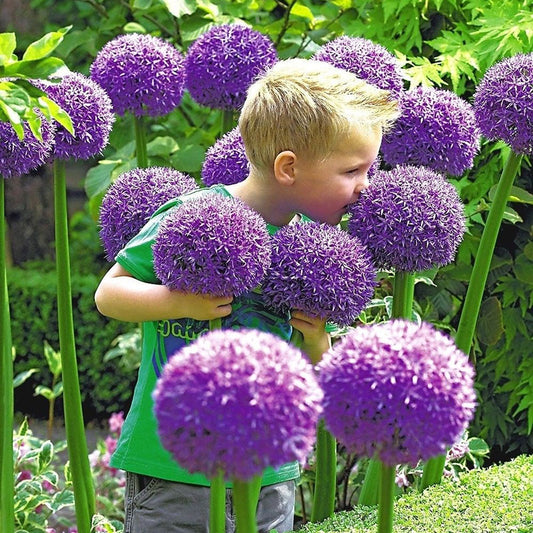
Allium Bulbs (Giant) - Gladiator
Sizeable globe-shaped blooms are striking in fresh flower arrangementsAllium Bulbs (Giant) - Gladiator
Sizeable globe-shaped blooms are striking in fresh flower arrangementsRegular price As Low As $31.49Regular priceUnit price per -
main-collection-product-grid
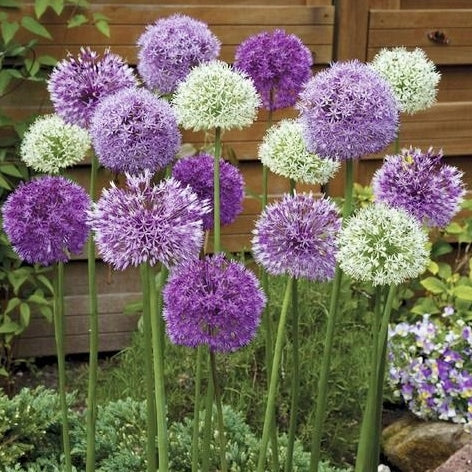
Allium Bulbs - All-In-One Mix
The only allium bulbs you'll ever need; all colors, shapes, and sizesAllium Bulbs - All-In-One Mix
The only allium bulbs you'll ever need; all colors, shapes, and sizesRegular price As Low As $20.99Regular priceUnit price per -
main-collection-product-grid
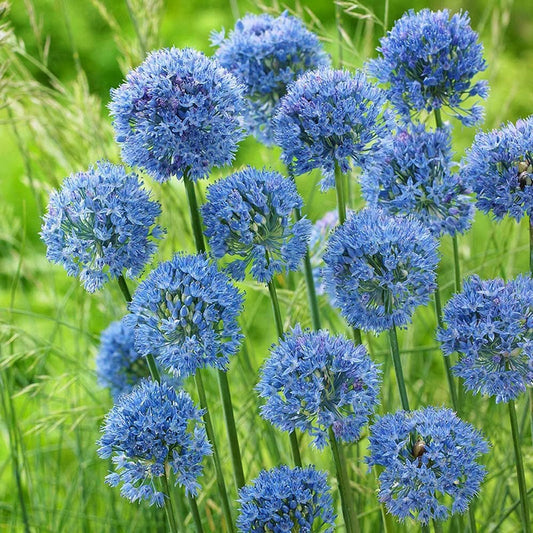
Allium Bulbs (Small) - Blue Caeruleum
The rarest flowering onion, these blue blooms are a hit among pollinatorsAllium Bulbs (Small) - Blue Caeruleum
The rarest flowering onion, these blue blooms are a hit among pollinatorsRegular price As Low As $19.99Regular priceUnit price per -
main-collection-product-grid
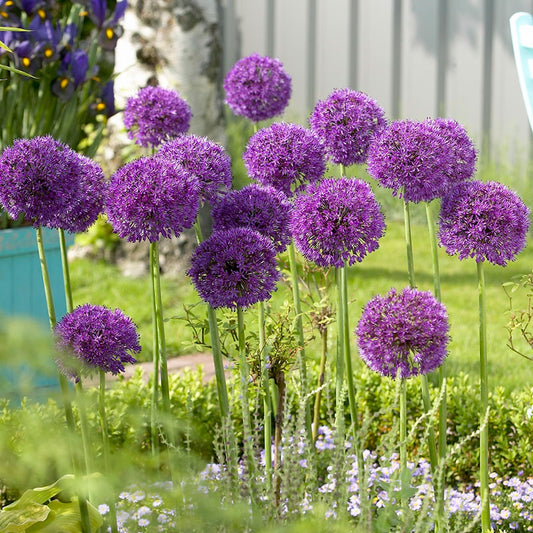
Allium Bulbs (Tall) - Purple Sensation
The quintessential flowering onion with fragrant purple globe-shaped bloomsAllium Bulbs (Tall) - Purple Sensation
The quintessential flowering onion with fragrant purple globe-shaped bloomsRegular price As Low As $19.99Regular priceUnit price per -
main-collection-product-grid
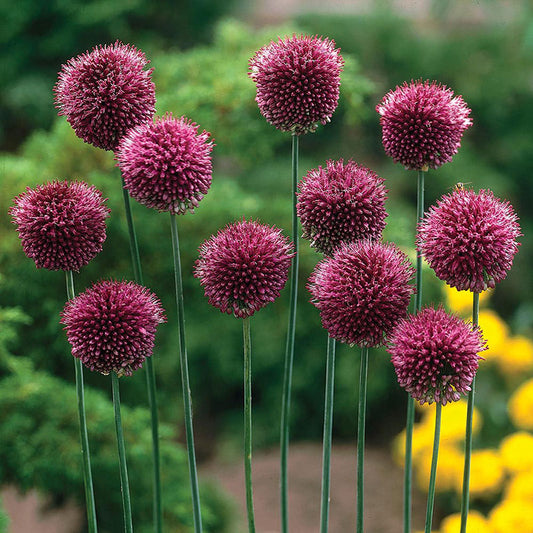
Allium Bulbs (Small) - Sphaerocephalon
Miniature mahogany blooms perfect for fresh and dried bouquetsAllium Bulbs (Small) - Sphaerocephalon
Miniature mahogany blooms perfect for fresh and dried bouquetsRegular price As Low As $16.79Regular priceUnit price per -
main-collection-product-grid
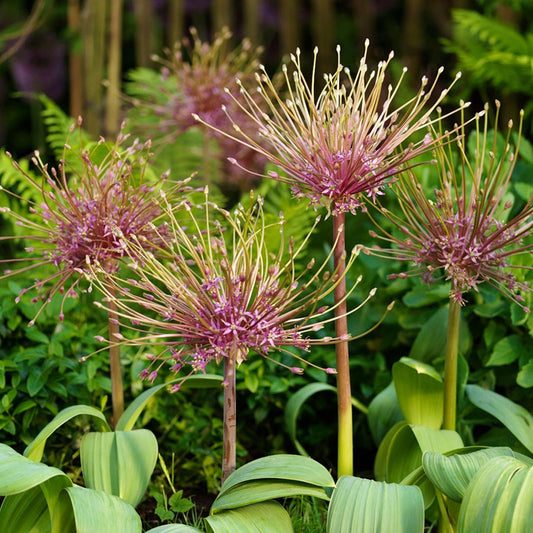
Allium Bulbs (Tall) - Schubertii
A wonderfully unique allium with the most whimsical bloomsAllium Bulbs (Tall) - Schubertii
A wonderfully unique allium with the most whimsical bloomsRegular price As Low As $30.49Regular priceUnit price per -
main-collection-product-grid
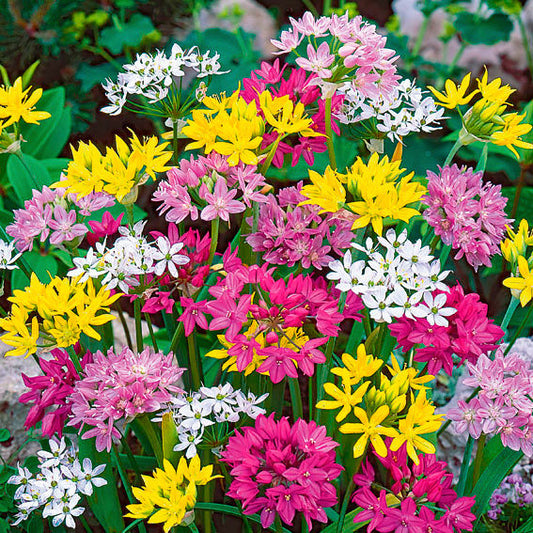
Allium Bulbs - Small Flowering Mix
Brighten up your spring flower patch with little multi-colored bloomsAllium Bulbs - Small Flowering Mix
Brighten up your spring flower patch with little multi-colored bloomsRegular price As Low As $14.69Regular priceUnit price per -
main-collection-product-grid
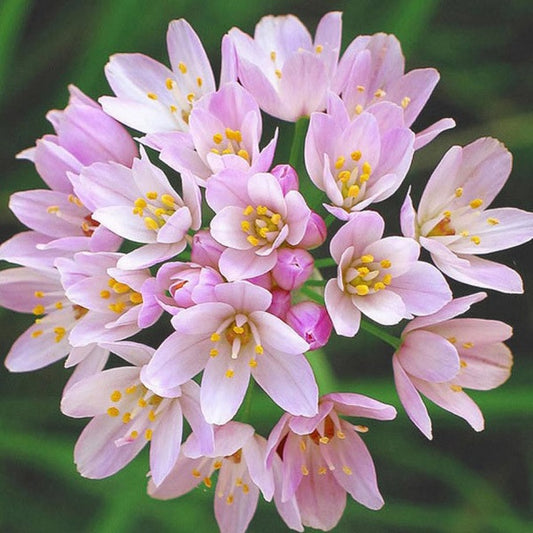
Allium Bulbs (Small) - Roseum
Blush-colored composite flowers are striking in the garden or the vaseAllium Bulbs (Small) - Roseum
Blush-colored composite flowers are striking in the garden or the vaseRegular price As Low As $17.89Regular priceUnit price per -
main-collection-product-grid
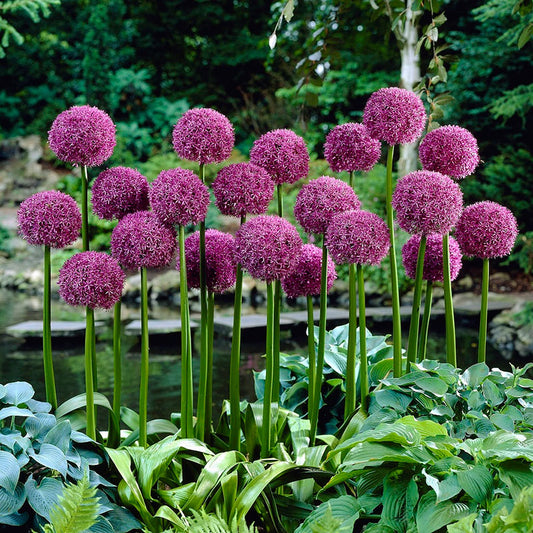
Allium Bulbs (Giant) - Globemaster
A classic purple allium with a striking effect when planted en massAllium Bulbs (Giant) - Globemaster
A classic purple allium with a striking effect when planted en massRegular price As Low As $31.49Regular priceUnit price per -
main-collection-product-grid
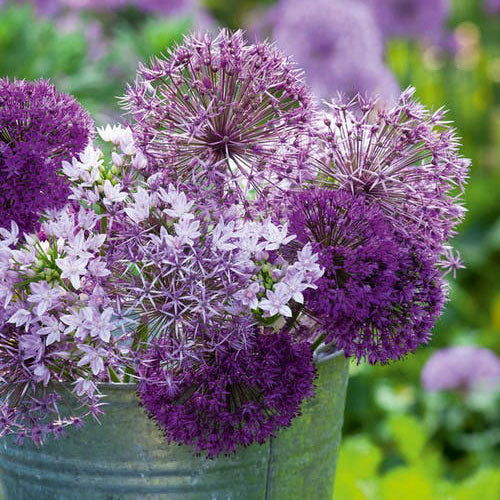
Allium Bulbs - Graceful Mix
The perfect mix of purple-hued spherical blooms for a whimsical gardenAllium Bulbs - Graceful Mix
The perfect mix of purple-hued spherical blooms for a whimsical gardenRegular price As Low As $37.79Regular priceUnit price per -
main-collection-product-grid
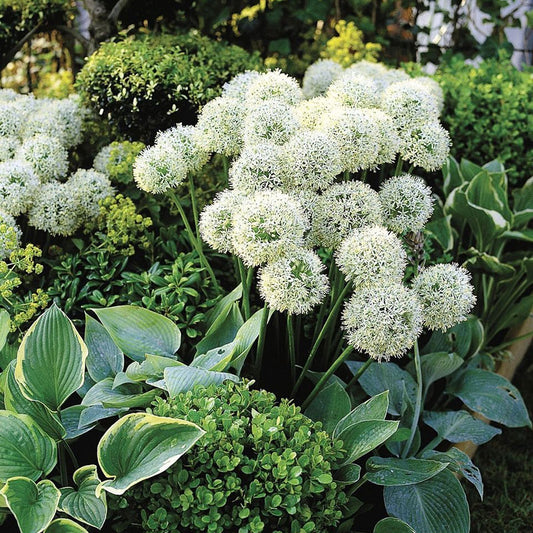
Allium Bulbs (Giant) - Mont Blanc
A towering white allium as majestic as its namesake mountainAllium Bulbs (Giant) - Mont Blanc
A towering white allium as majestic as its namesake mountainRegular price As Low As $39.89Regular priceUnit price per -
main-collection-product-grid
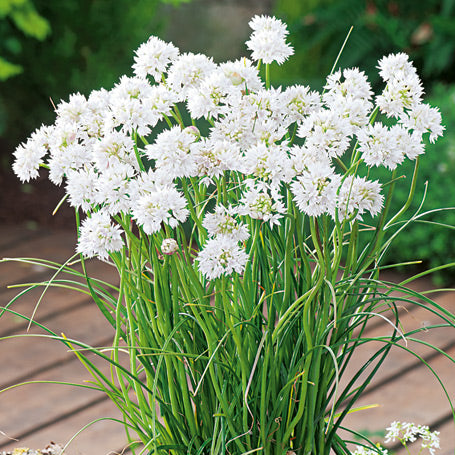
Allium Bulbs (Small) - Graceful
This container-friendly snow-white allium grows less than two feet tallAllium Bulbs (Small) - Graceful
This container-friendly snow-white allium grows less than two feet tallRegular price As Low As $19.99Regular priceUnit price per -
main-collection-product-grid
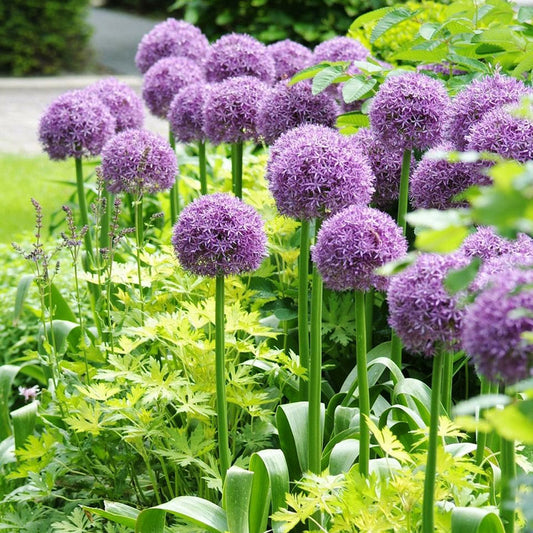
Allium Bulbs (Giant) - Giganteum
Our largest allium with purple globes the size of a softballAllium Bulbs (Giant) - Giganteum
Our largest allium with purple globes the size of a softballRegular price As Low As $26.29Regular priceUnit price per -
main-collection-product-grid
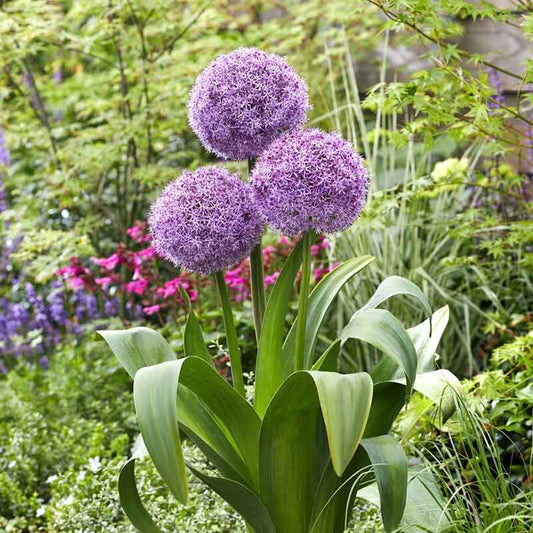
Allium Bulbs - Party Balloons
A playful, multi-blooming allium to add whimsy in the gardenAllium Bulbs - Party Balloons
A playful, multi-blooming allium to add whimsy in the gardenRegular price As Low As $15.79Regular priceUnit price per -
main-collection-product-grid
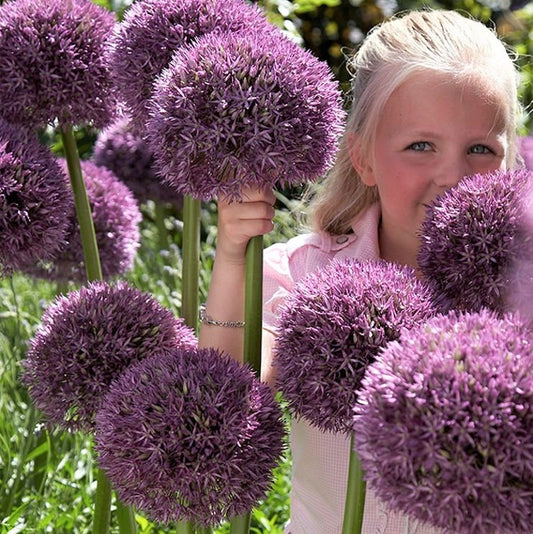
Allium Bulbs (Giant) - Pinball Wizard
Impressively large, violet globe-shaped blooms that are deer resistantAllium Bulbs (Giant) - Pinball Wizard
Impressively large, violet globe-shaped blooms that are deer resistantRegular price As Low As $38.89Regular priceUnit price per -
main-collection-product-grid
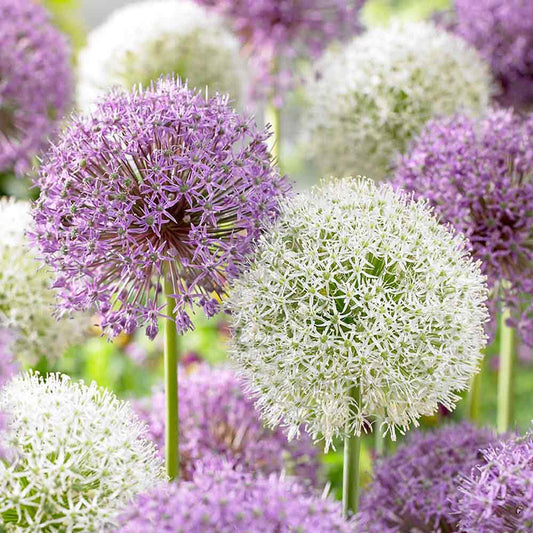
Allium Bulbs - Giant Mix
A balanced blend of lavender and cream globe-shaped bloomsAllium Bulbs - Giant Mix
A balanced blend of lavender and cream globe-shaped bloomsRegular price As Low As $34.69Regular priceUnit price per
What we love about growing alliums
- 20 allium bulb varieties
- Attracts pollinators and is deer resistant
- Makes unique dry flower arrangements
- Use dried allium heads to make potpourri
The best online selection of colorful allium bulbs
Allium is a genus of flowering plants that consists of hundreds of species! Garlic, onions, scallions, shallots, and leeks are all card-carrying members of the massive allium family. But did you know that alliums can also be extraordinary flowers? It's true! Many alliums produce flowers that typically have six petal-like tepals. The curious flowers appear on a tall, sturdy stalk in a globe-like cluster. Depending on the species, the anthers and pollen color will vary. Heights will also vary between varieties, ranging anywhere form five inches to as towering as four feet! To see some of the variations, check out our Giant Spider Alliums, Small Blue Caeruleum, Tall Schubertii, and our Drumstick Allium bulbs, just to name a few of our more than 20 allium varieties. Looking for an allium flower that will grow as big as a large grapefruit? Check out our Giant Gladiator Alliums. With so many fun options, these blooming onion bulbs are a popular garden favorite.
Allium bulbs are easy to plant
While it's plain to see the aesthetic appeal of flowering alliums, the ease of planting should not be overlooked. Alliums are traditionally planted in the fall for late spring and early summer blooms. If possible, select a site in your yard that will receive full sun. Like most bulbs, alliums thrive in sun. However, they can be successfully grown in partial shade as well. Your soil should have proper drainage. In most cases, you will want to fertilize your allium planting site with bulb food to help ensure that the bulbs are properly established. Dig a hole that is about twice as deep as the height of the bulb. Each hole should be around six to eight inches apart. Be sure to plant allium bulbs pointy end up! After you have planted your bulbs, be sure to water them sufficiently. You can also successfully plant alliums indoors. Providing your alliums have proper drainage and sunlight, they will cheerfully reappear year after year. Not only that, but their slim, vertical shape takes up very little ground space, leaving you room to keep them company with accent plants such as geraniums, hostas, irises, or peonies.
Allium bulbs make wonderful floral arrangements
Allium flowers symbolize unity, prosperity, patience, and good fortune. All wonderful things to represent in your yard or in a statement-making cut flower arrangement or bouquet! Whether, fresh or dried, alliums make spectacular, bold statements in floral arrangements, so be sure to cut some for inside.
For more information about planting, growing, and caring for alliums, see the Allium Seeds Planting Guide.















